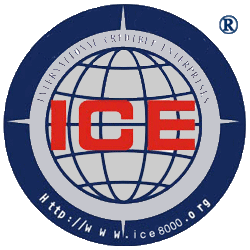Enterprise Profitability Analysis-World Credit Organization
3.8 Analysis of corporate profitability
Profitability refers to the ability of a business to make a profit. There are many financial ratios that reflect the profitability of an enterprise, and the main ones commonly used are: return on assets, profit rate, and asset turnover.
1. Return on assets
The return on assets is the comparison of the profit of the enterprise with the size of the enterprise.
|
ROA= |
Profit |
×100% |
Total assets |
There are many ways to define profit, for example: profit can be divided into profit before tax or profit after tax. The calculation formula of the ratio should remain unchanged for many years. For example, if the pre-tax profit is used as the numerator, it will remain unchanged, otherwise it will lose its comparative value.
Case: Yongzheng Company's return on assets in 2004 and 2007
2004 |
2005 |
2006 |
2007 |
|
Assets |
1 million |
1.2 million |
1.4 million |
1.6 million |
Pre-tax profit |
200,000 |
220,000 |
240,000 |
260,000 |
Return on Assets |
20% |
18.9% |
17.1% |
16.2% |
It can be seen from the above table that although the unit's profit and assets are increasing, its return on assets has dropped from 20% to 16.2%, indicating that its profitability has declined, and it is a downward trend year by year .
2. Profit rate
Profit rate is the ratio of corporate profit to sales revenue, which is divided into two forms: gross profit rate and net profit rate.
|
Gross Margin = |
Gross profit (i.e. sales revenue - cost of sales) |
×100% |
Sales revenue |
Net profit margin= |
Net profit (i.e.: sales revenue - sales cost - management expenses, etc.) |
×100% |
Sales revenue |
Analysts can compare profit margins for the same business in different years, and they can compare profit margins for different businesses. If a business has a gross profit margin of 25 percent and its competitor has a gross profit margin of 35 percent, the analyst looks for the reason for the difference. The cost of the business may be too high, and it may lose out to the competition as a result. Falling profit margins are also a concern. If a business's net profit margin is 15% in the first year and the net profit margin suddenly drops to 5% in the second year, this may be a red flag.
3. Asset turnover
The asset turnover ratio is the value of sales revenue and total assets, which is used to measure the ability of a company to use assets to earn income.
|
Asset turnover = |
Sales revenue |
times |
Total assets |
Asset turnover is a measure of a business's ability to sell. The faster the turnover, the stronger the sales ability.
4. Basic ratio and decomposition ratio
The above three ratios are interrelated and are sometimes referred to as base ratios and split ratios.
|
ROA= |
Profit Margin |
× |
Asset Turnover |
Return on Assets= |
Profit |
× |
Sales revenue |
Sales revenue |
Total assets |
The above content is excerpted from "ICE8000 Credit Investigation, Analysis, and Rating" (written by Fang Bangjian, free to use, but please indicate the source)


